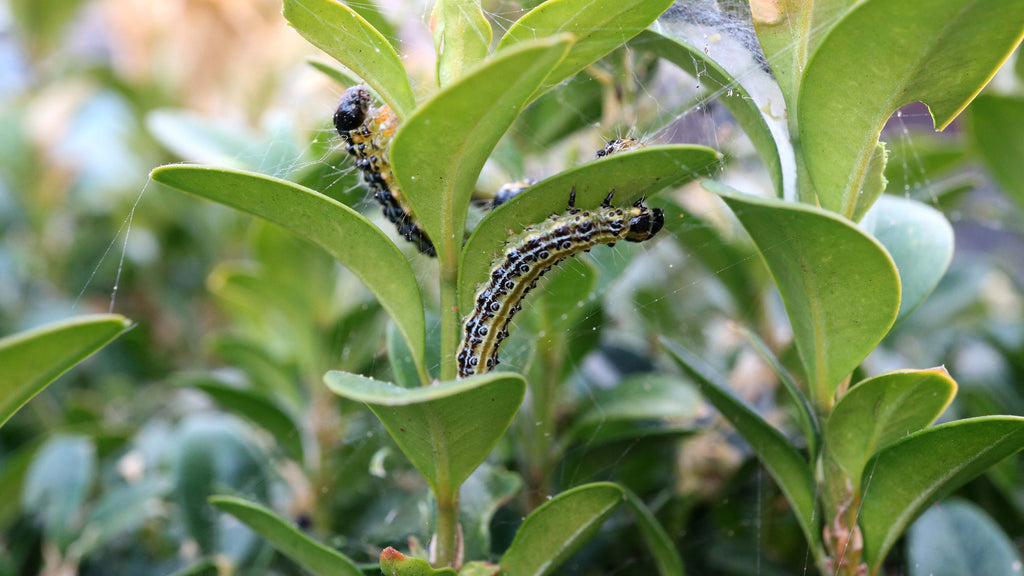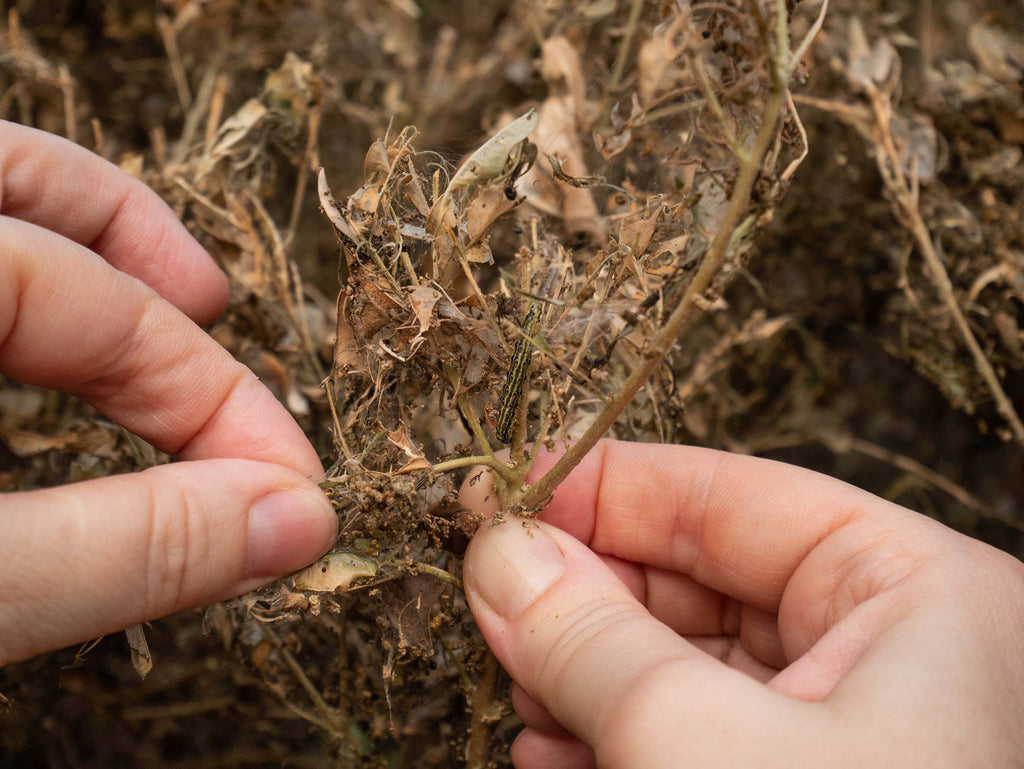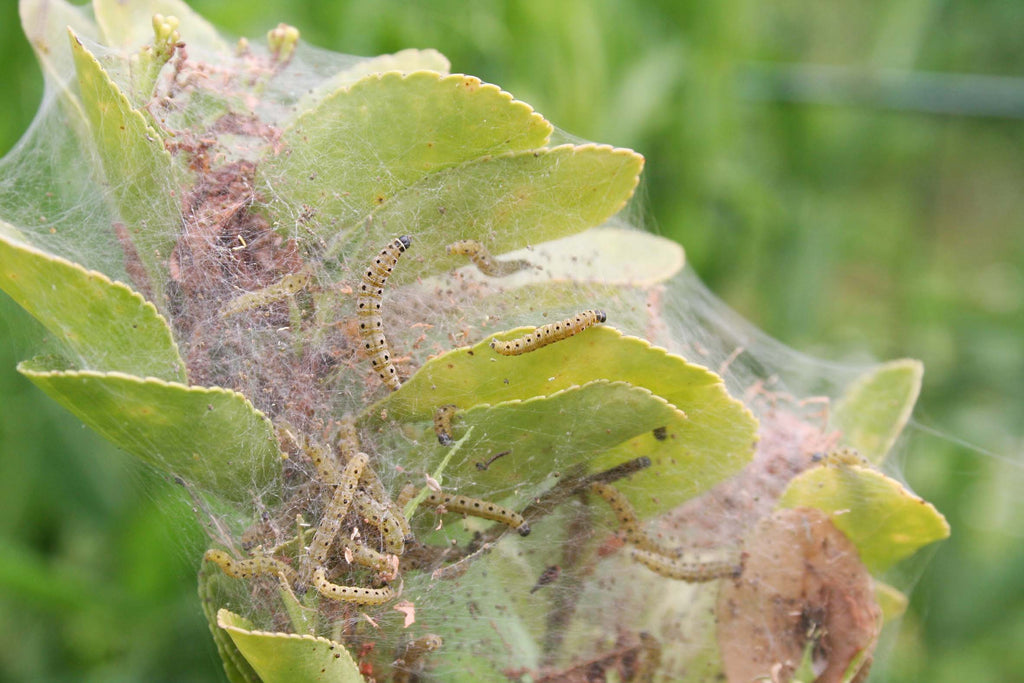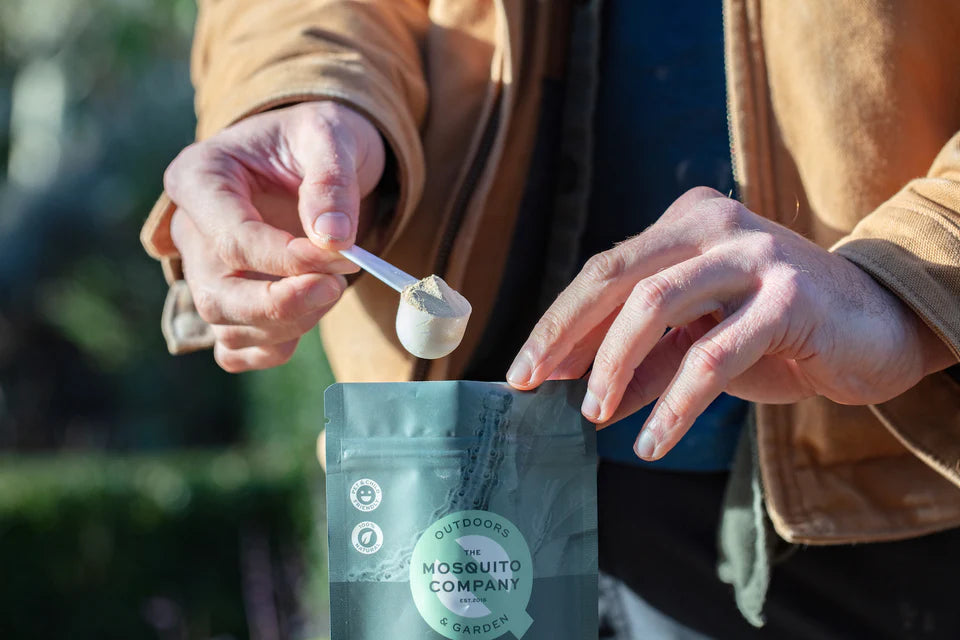
The box tree caterpillar has become an increasingly common pest in the UK, particularly in the South East. It feeds exclusively on box bushes, and if left to its own devices, can cause extensive damage to Buxus shrubs. Thankfully, there is a range of measures that we can take to identify and treat box tree caterpillar infestations before they cause too much devastation. Solutions involve ecologically friendly practices as well as chemical controls, such as insecticides and soaps. However, the most important aspect of managing box tree caterpillars is early detection. By catching them at the onset of their feeding, you have the best chance of protecting your box bushes from potential disruption.
What time of year you you get box tree caterpillars?
- April through to October
Box tree caterpillars are traditionally seen between April and October in the UK. They initially appear in the form of small green-grey larvae, which then munch their way across box trees and other evergreen plants such as holly, yew, and privet. By midsummer they become more visible as large white caterpillars with black stripes. The box tree caterpillar overwinters as a pupa before emerging as an adult moth in the following spring.
Box tree moth caterpillar lifecycle
Its lifecycle consists of four stages: egg, larva, pupa, and adult. The eggs are laid on box trees from spring to early summer, where they will hatch after a few weeks into small larvae. It's these larvae that cause the damage by feeding on box leaves for several weeks, they swell up with body mass and eventually pupate in silken webs on the box tree branches. From there, adults emerge to lay eggs again once temperatures are fluctuating between 65-86F (18-30C).

What are the signs of box tree caterpillar damage?
Healthy buxus green
- Light green in spring
- Dark green in summer
Faded brown leaves
Typical signs of box tree caterpillar damage include faded brown leaves. Destruction starts around the base as the box tree caterpillars feed on foliage.

White webbing around affected branches/leaves
white webbing in the surrounding foliage. This webbing is often distorted and appears slightly grey due to embedded pieces of skin from the caterpillar’s previous molting cycle, creating an unsightly look across boxwood bushes. These pests feed off boxwood foliage and leave their signature webbing behind even after they have left the plant's vicinity.
Eggs
Small dark green eggs that are found mainly along trunks and branches.
Will you see caterpillars?
Yes, but younger caterpillars are often too small to notice. However, when faded or brown patches appear and swarms of larger black-headed green striped caterpillars become visible - their distinctly tropical East Asian origin revealed.
Can the damage be caused by box blight instead of caterpillars?
Box blight can cause more than just brown patches. It might also bring streaks of black to young stems and white or pink spores on the underside of leaves. Box caterpillar damage, meanwhile, is a whole different ballgame as this pest physically eats away at foliage – yellowing could be due to other factors such as lack of nutrients or shade inveracity. Make sure you check for all signs next time your Buxus appears distressed!
Box tree caterpillar treatments
Remove By Hand
To safeguard the environment against box tree caterpillar infestations, manual removal is an ideal solution. Though this method can be painstakingly difficult due to dense Buxus foliage and camouflaged webs, it's essential for small-scale outbreaks in order to prevent further progression of damage.
Box Tree Moth Trap
Box tree moth traps are a reliable and effective way to control these pesky insects. Simply put the pheromone in the lid, add water and hang up for an easy set-and-forget solution – check back later to tally your catch! With regular refills of fresh pheromone you can prevent future infestations from taking hold. If numbers become exceptionally high (e.g., 50 moths/week), it’s recommended that insecticide is used alongside trapping as well; this combined approach should keep those box trees looking spick-and–span while also giving insight into any potential new activity via trap checks.

Bacillus Thuringiensis (Works Immediately)
Bacillus thuringiensis is a very effective tool in controlling box tree caterpillars, its works instantly and is know to be the most effective method. This approach offers a safe and environmentally friendly option, with no health risks to humans, animals and plants as well as other beneficial insects like bees. Applying this biological control agent works by introducing harmless bacteria into the environment which will cause disease in box tree caterpillars, eventually leading to their death. With restoration of box trees a priority across much of the British landscape, utilizing Bacillus thuringiensis provides an efficient way to maintain box tree populations while causing minimal disruption to the ecosystem.
You can buy BTA in powdered form ready to be mixed with water and sprayed directly onto the affected area, a little goes a long way!
- 100% natural
- Stops caterpillars feeding instantly
- Harmless to the environment
Nematodes
Nematodes are an effective way to control box tree caterpillars, but timing is key. To be most useful when dealing with these critters, nematodes should be mixed with water and applied during the evening in moist conditions on a day where temperatures won’t dip below 12°C; this ensures that they can do their job quickly and effectively. These tiny worms must also remain refrigerated if they will not be used within 4 weeks of purchase – so only order them once you have time available for treatment!




